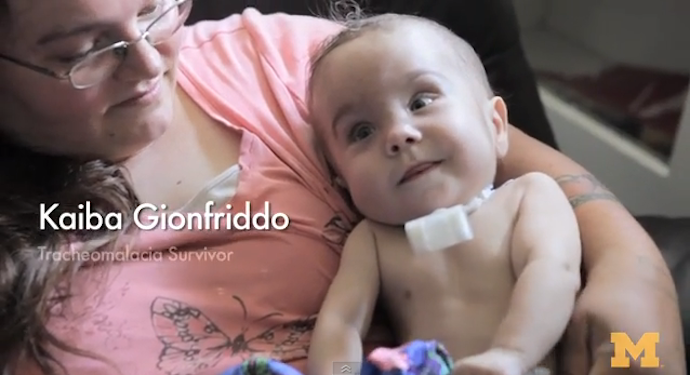3D Printer Saves Baby’s Life
You might think that 3D printing has a long ways to go before it can become useful. Or maybe you’re scared that some people want to use 3D printers to manufacture unregistered guns. Whatever you may think, you should know today that 3D printing saved a baby’s life.
Little Kaibo Gionfriddo started to stop breathing and turn blue randomly as he gradually grew older. He would spend weeks in the hospital, with doctors desperately trying to help him. Kaiba is found to have tracheomalacia, a medical condition which causes the lungs to collapse when more air is needed. Nearly every doctor who worked on him said he would have little to no chances of living. The Gionfriddo family was desperate.
Thankfully Dr. Glenn Green had the foresight to try something different. After cat scanning Kaibo, Dr. Green and other doctors were able to see just what they could to stop Kaibo’s breathing problems. By using a 3D printer, they were able to create a splint that allowed Kaibo to breathe. As soon as the treatment was administered, Kaibo immediately started breathing normally again.
Dr. Scott Hollister, who worked with Dr. Green on the operation was amazed by its success. “Kaiba’s case is definitely the highlight of my career so far. To actually build something that a surgeon can use to save a person’s life? It’s a tremendous feeling.”
Kaibo’s case is rare, but its uniqueness should not affect the use of 3D printing as a miraculous technology. When all hope seems lost in a medical situation, we now can take advantage of new technology to help people who would never have been able to survive.
“Severe tracheobronchomalacia has been a condition that has bothered me for years,” says Dr. Green. “I’ve seen children die from it. To see this device work, it’s a major accomplishment and offers hope for these children.”
The Gionfriddo family is incredibly grateful to Dr. Green, Dr. Hollister, The University of Michigan, and the technology of 3D printing for saving their sons life. Let’s hope Kaibo case isn’t the last use of 3D printing for medical purposes.










































